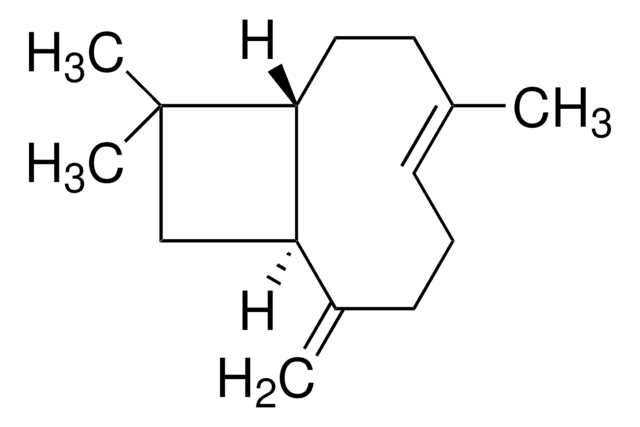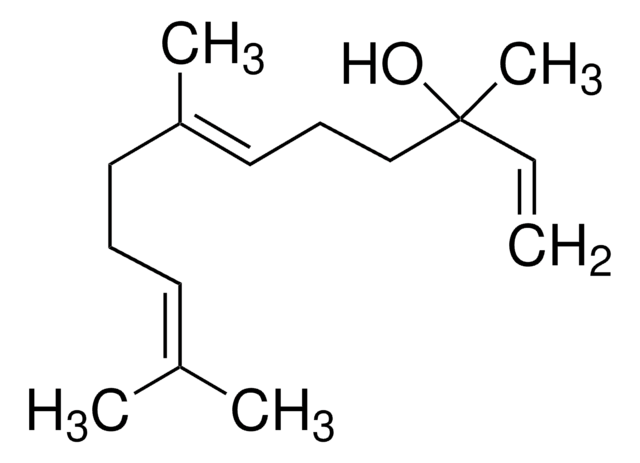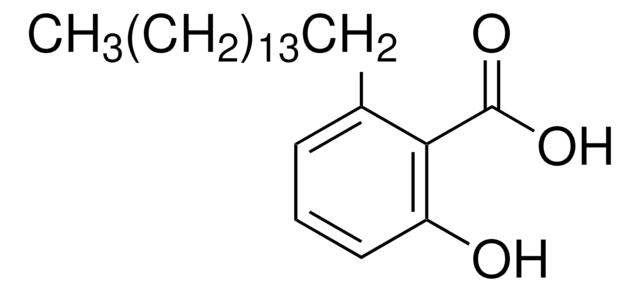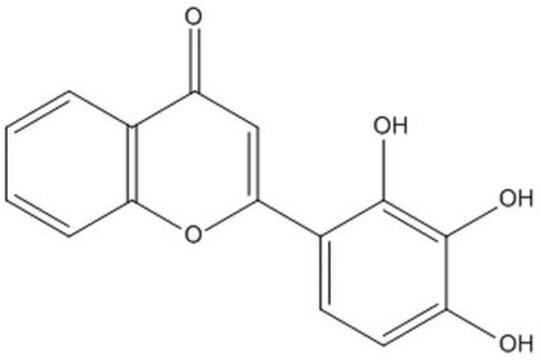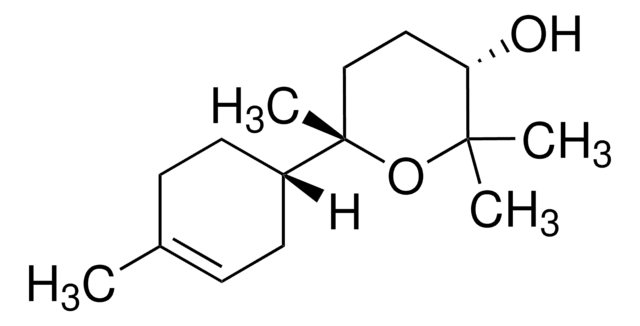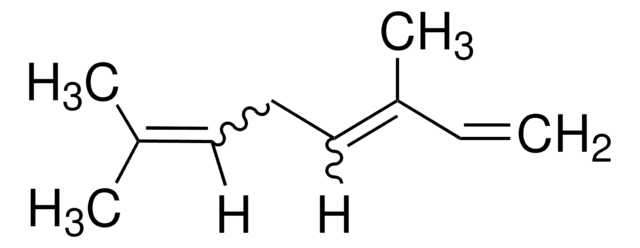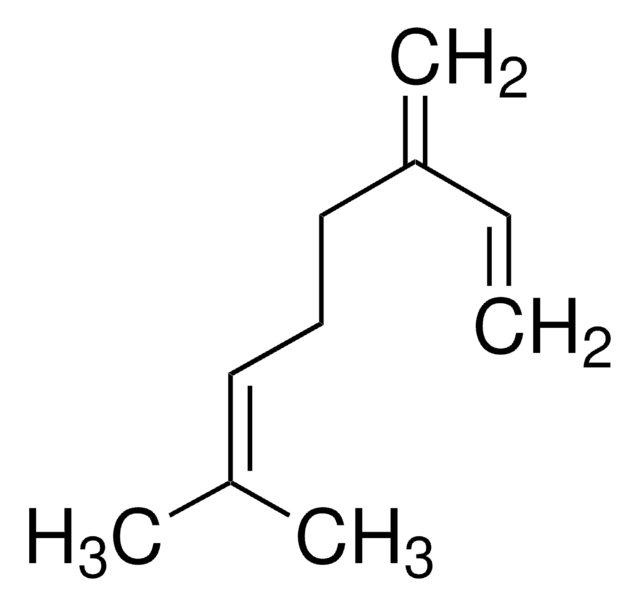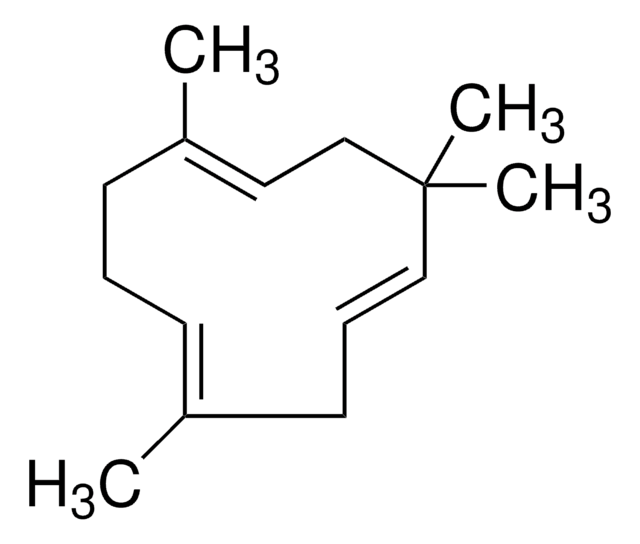73492
trans-β-Farnesene
analytical standard
Sinónimos:
trans-7,11-Dimethyl-3-methylene-1,6,10-dodecatriene
About This Item
Productos recomendados
grade
analytical standard
Quality Level
assay
≥90% (GC)
shelf life
limited shelf life, expiry date on the label
technique(s)
HPLC: suitable
gas chromatography (GC): suitable
application(s)
food and beverages
format
neat
storage temp.
−20°C
SMILES string
[H]\C(CCC(=C)C=C)=C(\C)CC\C=C(\C)C
InChI
1S/C15H24/c1-6-14(4)10-8-12-15(5)11-7-9-13(2)3/h6,9,12H,1,4,7-8,10-11H2,2-3,5H3/b15-12+
InChI key
JSNRRGGBADWTMC-NTCAYCPXSA-N
¿Está buscando productos similares? Visita Guía de comparación de productos
Categorías relacionadas
General description
Application
- Secondary metabolite profiling of various plant parts collected from 82 plants belonging to 21 different cannabis strains using gas chromatography-mass spectrometry (GC-MS) for sterols and terpenoids (mono-, sesqui-, tri-), and high-performance liquid chromatography (HPLC) with UV and mass spectrometric (MS) detection for flavonoids
- Gas chromatographic analysis of a total of 163 compounds in the essential oil samples extracted from the leaves and flowers of Lantana camara, in combination with detection techniques of mass spectrometry (MS) and flame ionization detection (FID)
- Simultaneous determination of 49 compounds from the essential oil samples obtained from the methanolic extracts of dried leaves and flowers of C. macropodum by GC-FID and GC-MS methods
- Identification and quantification of 31 volatile organic compounds from the flowers of P. Nobby’s Pacific Sunset using DVB/CAR/PDMS fibers in the solid-phase microextraction (SPME) technique for the sample enrichment followed by their GC-MS analysis
Other Notes
signalword
Danger
hcodes
Hazard Classifications
Asp. Tox. 1
Storage Class
10 - Combustible liquids
wgk_germany
WGK 3
flash_point_f
230.0 °F
flash_point_c
110 °C
ppe
Eyeshields, Gloves, type ABEK (EN14387) respirator filter
Elija entre una de las versiones más recientes:
Certificados de análisis (COA)
¿No ve la versión correcta?
Si necesita una versión concreta, puede buscar un certificado específico por el número de lote.
¿Ya tiene este producto?
Encuentre la documentación para los productos que ha comprado recientemente en la Biblioteca de documentos.
Los clientes también vieron
Protocolos
-β-Farnesene; α-Huµlene; Germacrene D; (+)-Valencene; Bicyclogermacrene; (+)-δ-Cadinene
Nuestro equipo de científicos tiene experiencia en todas las áreas de investigación: Ciencias de la vida, Ciencia de los materiales, Síntesis química, Cromatografía, Analítica y muchas otras.
Póngase en contacto con el Servicio técnico


